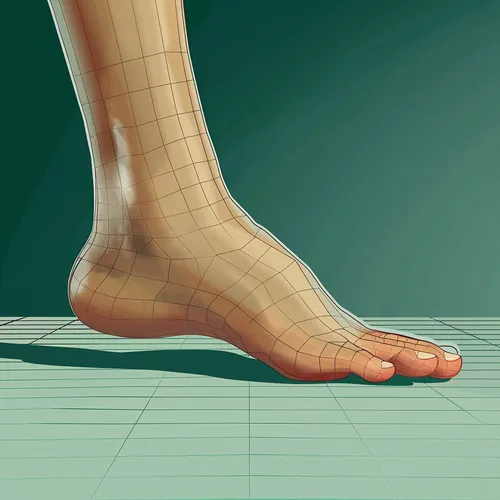Diabetic neuropathy is a neurological disorder that affects those who have diabetes. It occurs when the nerves in the body are damaged due to the high levels of sugar in the bloodstream. Neuropathy can affect all areas of the body, from the nerves in the feet, legs, hands, arms, and even the digestive tract. Depending on which nerve is affected, patients can experience a wide range of symptoms.
Diabetic neuropathy is one of the most common long-term complications of diabetes. It is estimated that up to 70 percent of people with diabetes may have some form of neuropathy, but symptoms can range from mild to severe. Early diagnosis and treatment of this condition can reduce the chances of developing the more severe forms of the condition.
The primary symptom of diabetic neuropathy is pain. Patients can experience pain in the affected areas, including tingling, burning, or pricking, as well as numbness. Other common symptoms include muscle weakness, fatigue, and coordination problems.
Understanding the Different Types
When it comes to diabetic neuropathy, not all nerve damage is the same. To better grasp this complication, you need to understand the different types that can occur. Let’s dive into the four main categories:
Peripheral Neuropathy
This is the most common form, affecting the nerves in your arms, hands, legs, and feet. Symptoms often start in the toes and gradually work their way up. You might experience numbness, tingling, or a “pins and needles” sensation. Some people describe it as a burning or freezing feeling.
Autonomic Neuropathy
The autonomic nervous system controls involuntary bodily functions like heart rate, blood pressure, digestion, and bladder function. When these nerves become damaged, you could face issues like dizziness, digestive problems, urinary troubles, or an inability to sense when your blood sugar drops.
Proximal Neuropathy
Though less prevalent, this type strikes nerves in the thighs, hips, buttocks, or legs. It tends to happen more abruptly and affect one side of the body initially. Weakness and atrophy in the affected muscles are common symptoms.
Focal Neuropathy
With focal neuropathy, damage occurs in an isolated nerve, perhaps caused by entrapment or compression. Depending on the nerve affected, you might experience double vision, paralysis on one side of your face, or pain in the front of your shin or lower back.
Reducing Your Risk
While diabetic neuropathy can’t always be prevented, there are steps you can take to lower your likelihood of developing this complication. First and foremost? Managing your blood sugar levels diligently. Keeping those glucose readings in a healthy range goes a long way.
But there’s more you can do to stack the odds in your favor:
- Lose weight if you’re overweight or obese
- Exercise regularly (after checking with your doctor)
- Avoid smoking and excessive alcohol
- Monitor your blood pressure and cholesterol
- Inspect your feet daily for cuts, sores, or infections
- Work closely with your care team to control risk factors
The bottom line? While diabetic neuropathy is common, it’s not inevitable. With committed self-care and regular checkups, you can take an active role in protecting your nerves.
When to Seek Medical Attention
Sometimes, nerve damage progresses gradually with subtle warning signs. Other times, the symptoms come on more suddenly and severely. Either way, don’t ignore potential red flags like:
- Numbness, tingling, or pain in your extremities
- Weakness or coordination issues that impact daily tasks
- Digestive woes like nausea, vomiting, constipation, or diarrhea
- Dizziness or fainting spells
- Bladder control problems
- Persistent foot sores that won’t heal
If you experience any of these, schedule an appointment with your doctor right away. Proper medical care and adjustments to your management plan can help prevent the neuropathy from worsening.
Diabetic neuropathy can be divided into two types: peripheral neuropathy, which affects the nerves in the arms, legs, and other areas of the body; and autonomic neuropathy, which affects the autonomic nervous system, controlling the organs and functions that are not consciously directed such as heartbeat, digestion, and digestion.
There are several treatments available for diabetic neuropathy, depending on the severity of the condition. Common approaches include lifestyle modifications, medications, physical therapy, and alternative treatments such as acupuncture. In more severe cases, surgery may be required to reduce symptoms.
Diabetic neuropathy can have a significant impact on quality of life for those affected, so it is important to take steps to reduce the risk of developing it. People with diabetes should follow their recommended treatment plans, including controlling their blood sugar levels, exercising regularly, avoiding smoking and alcohol, and maintaining a healthy weight. Regular checkups with a doctor are also essential in order to monitor progress and make any necessary adjustments to the treatment plan.
Photo “Diabetic Neuropathy ” by Anthony Cunningham for Zoom Health
Zoom Health is a leading UK supplier of Home Health Tests and Earplugs





